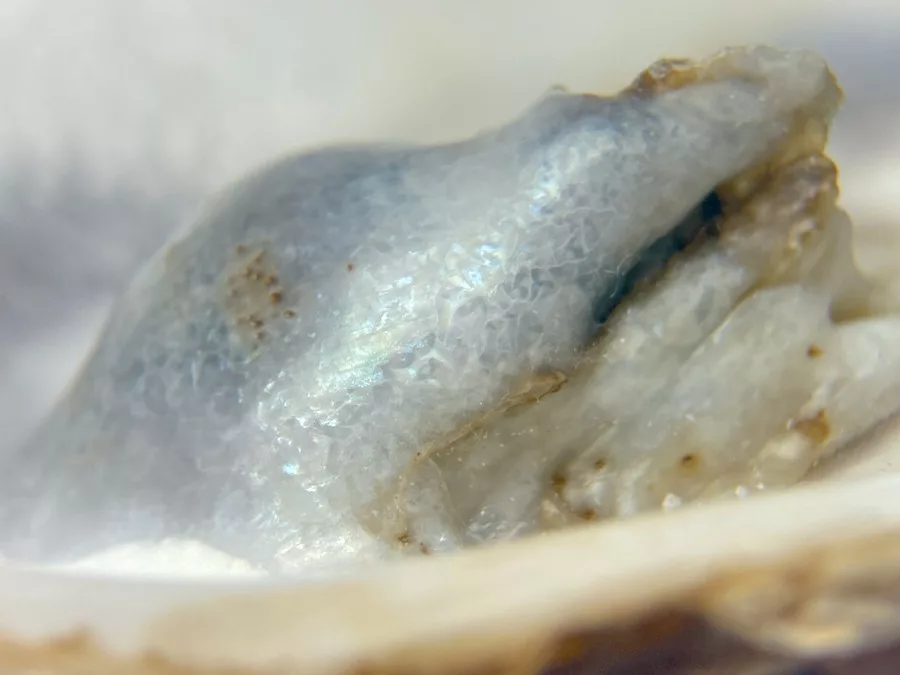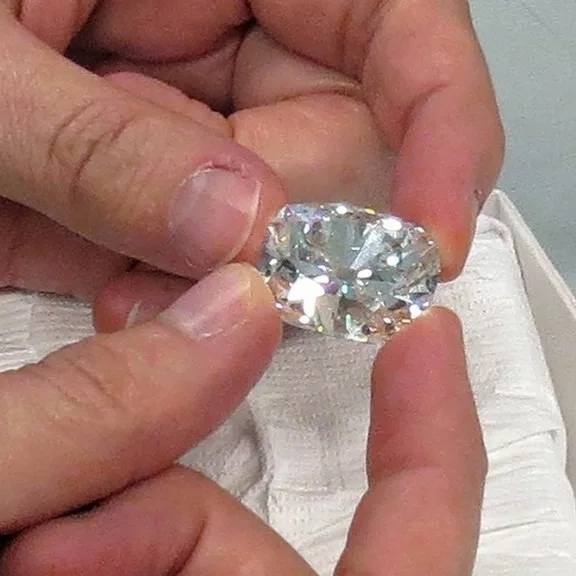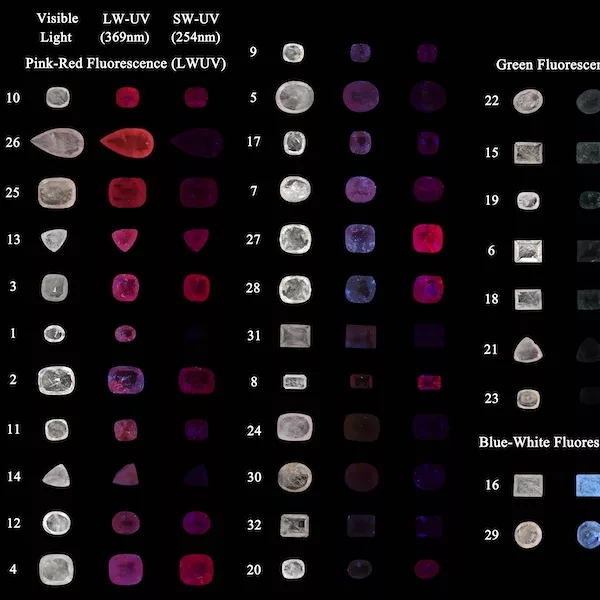Nacreous Blister Pearl Discovered in Edible Oyster (Crassostrea gigas)
A baroque pearl with a gray, nacreous appearance was discovered attached to the interior of an edible oyster while the author was enjoying a meal at home. The oyster had been purchased from a local seafood market in Dubai, United Arab Emirates. It was identified as a Pacific oyster (Crassostrea gigas) weighing 263.50 carats and measuring 10.9 x 5.9 x 3.0 cm. The pearl itself measured 18.1 x 11.7 x 10.6 mm (Figure 1) and was subsequently sent to the Dubai Central Laboratory for examination.
Raman spectroscopy confirmed that both the shell and pearl were primarily composed of calcite, with distinct peaks in the spectrum observed at 280, 712, 1085, and 1437 cm–1. Visual inspection of specific areas on the inner shell revealed patches of a mottled cellular structure that closely resembled the appearance of the pearl. Under fiber-optic light, the cellular structure within the oyster shell displayed a reflective colored sheen in certain orientations, resulting in an iridescent effect. This particular characteristic matched the surface appearance of the examined pearl (Figure 2).
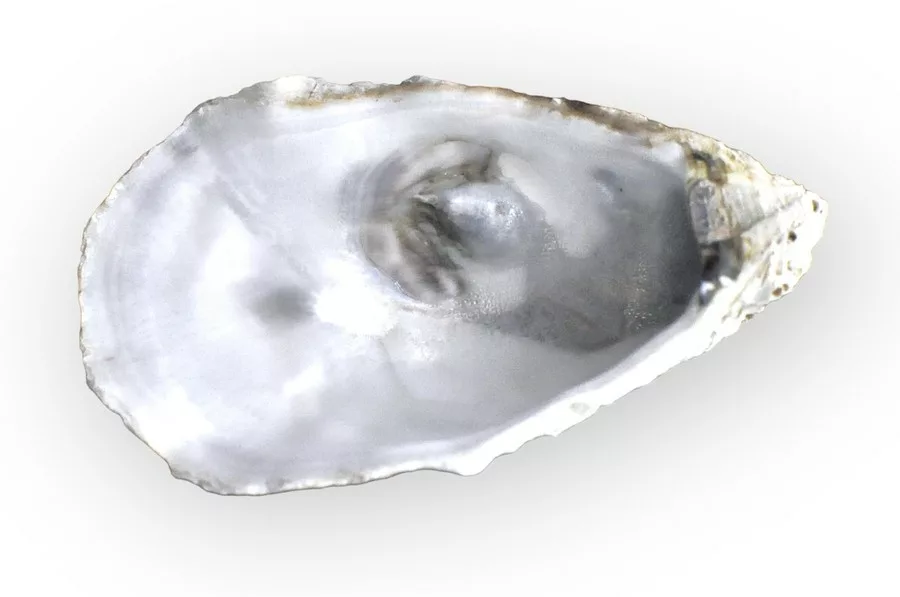
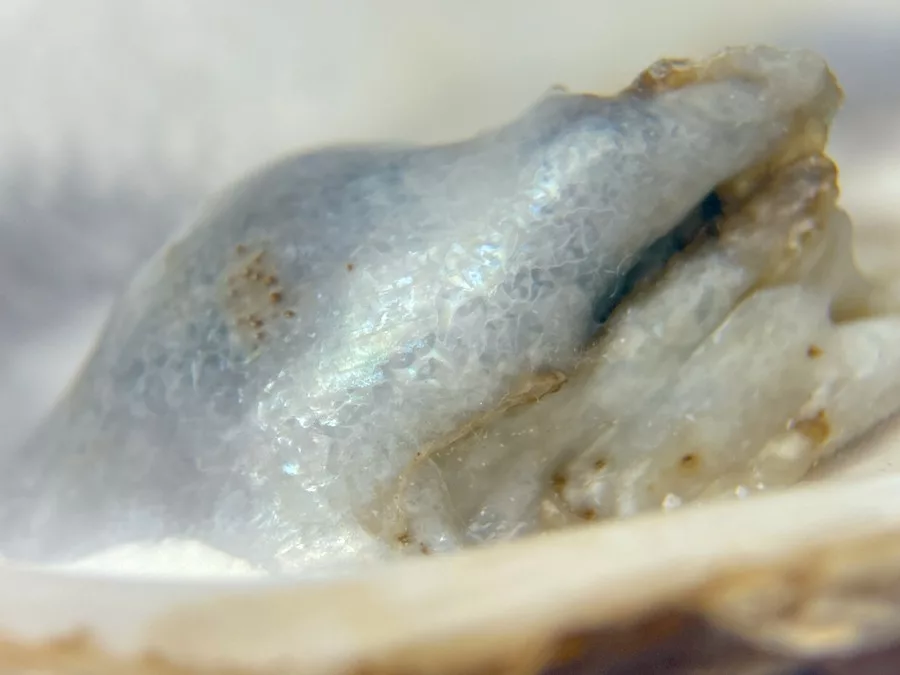
Chemical analysis conducted through energy-dispersive X-ray fluorescence (EDXRF) revealed low levels of manganese (Mn) in both the shell and pearl, consistent with the observed lack of luminescence during X-ray analysis. These findings confirmed the pearl’s growth in a saltwater environment. Real-time microradiography (RTX) further illustrated the pearl’s natural formation, displaying a growth arc structure mirroring the overall shape of the pearl, with a rounded core of slightly lower radio-opacity (Figure 3).
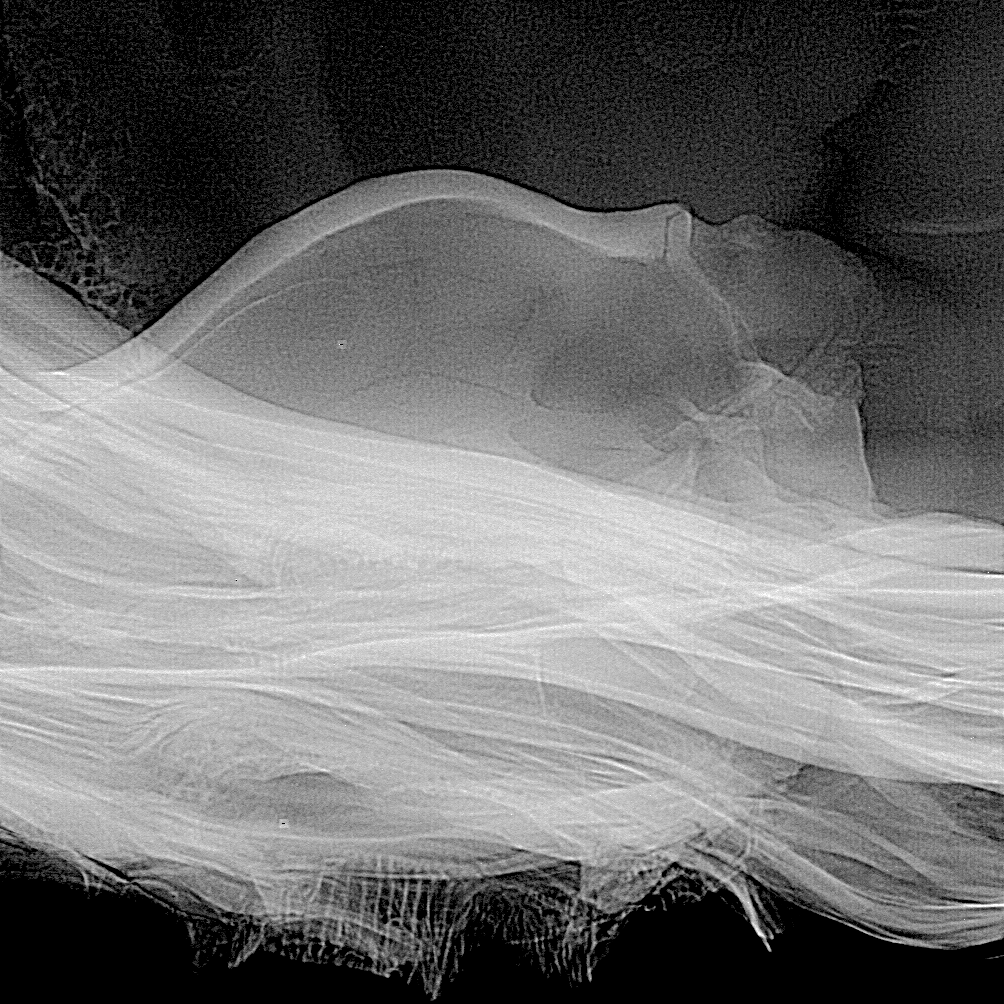
While previous literature mentions a few instances of oyster pearls, all recorded cases describe non-nacreous pearls (Scarratt et al., 2006; Zwaan and Groenenboom, 2014; Aslam et al., 2019; LeCroy and Homkrajae, 2020). Therefore, the discovery of this significant-sized nacreous pearl is especially noteworthy. Although oyster pearls are not highly sought-after in the global pearl market, they represent rare and captivating curiosities that provide valuable insights to the scientific community interested in pearls. This finding highlights the extremely uncommon occurrence of natural nacreous pearls produced by edible oysters.
References:
- Aslam, S., Chan, M.W.H., Siddiqui, G., Kazmi, S.J.H., Shabbir, N. and Ozawa, T., 2019. A near-round natural pearl discovered in the edible oyster Magallana bilineata. Gems & Gemology, 55(3), 439-440.
- LeCroy, B. and Homkrajae, A., 2020. 15.53 ct pearl discovered in edible oyster from Ostreidae Family. Gems & Gemology, 56(3), 420-422.
- Scarratt, K., Pearce, C. and Johnson, P., 2006. A note on a pearl attached to the interior of Crassostrea virginica (Gmelin, 1791) (an edible oyster, common names, American or Eastern oyster). Journal of Gemmology, 30(1/2), 43-50.
- Zwaan, J.C., Groenenboom, P., 2014. Natural pearls from edible ‘true oysters’ in Zeeland, the Netherlands. Journal of Gemmology, 34(2), 150-155.

